
The focus of yaoi manga, often known as “Boys’ Love” (BL), is on the love interactions between male characters. Originating in Japan, yaoi has expanded from its specialized start in the 1970s to become a popular worldwide phenomenon that appeals to a wide range of readers. In addition to providing entertainment, this genre questions conventional ideas about masculinity and sexuality. We will discuss the rich history, cultural significance, and attractiveness of yaoi manga to a wide range of readers in this blog post. This book tries to provide you a thorough grasp of this, whether you are a longtime fan or are just intrigued about this fascinating genre.
The Appeal of Yaoi Manga
Target Audience
Although readers of yaoi manga have grown to include people of all ages and genders, its primary audience remains young ladies. Readers are drawn to this genre because of its examination of sexual relationships and emotional closeness. In contrast to standard heterosexual romance plots, many fans like the emphasis on character development and emotional depth. Yaoi enables readers to safely delve into themes of love, desire, and vulnerability, which makes it especially relevant for people who might experience marginalization or misinterpretation in their own lives.
Themes and Tropes
Emotional struggle, forbidden connections, and unrequited love are common themes in it. Characters in these stories frequently battle with issues that affect their own lives or society, which exacerbates their love impulses. Readers love delving into well-known dynamics provided by popular clichés like “uke,” or the submissive partner, and “seme,” or the dominating partner. Furthermore, there are recurring themes of acceptance, self-discovery, and repentance that let readers relate to the characters on a personal level. It is interesting and thought-provoking because of its diverse range of themes and cliches.
Key Characteristics of Yaoi Manga
Art Style
Yaoi manga is known for its unique visual style, which is frequently typified by gorgeous male characters with exaggerated characteristics like big eyes and delicate facial structures. Many readers find this style appealing because they value how beauty and emotion are portrayed visually. Often focusing on private moments between individuals, the artwork uses vivid colors and delicate lines to evoke sentiments of desire and love. Furthermore, dynamic panel layouts are a common technique used by artists to capture the intensity of emotional exchanges, which improves the storytelling experience. The distinctive visual aesthetic plays a big role in drawing in new readers to this genre.
Storytelling Elements
Yaoi manga usually puts more emphasis on character development than complex storylines so that readers can fully follow the characters’ emotional journeys. The stories frequently examine intricate connections that develop over time, highlighting the characters’ development as they learn to live with their affections for one another. Deep emotional arcs addressing topics like self-acceptance, social expectations, and personal pain are what readers may anticipate. Because of the emphasis on character-driven narrative, readers are drawn in and become emotionally engaged in the resolutions of the relationships that are portrayed.
Popular Yaoi Manga Titles
Classic Titles
The yaoi genre was created by a number of iconic works that are still cherished by enthusiasts. Shungiku Nakamura’s Junjou Romantica has a number of love narratives starring different couples, each of which is dealing with an own set of difficulties. Ayano Yamane’s Viewfinder, renowned for its deep drama and intricate character interactions against a backdrop of mystery and murder, is another notable book. Another Nakamura work, Sekaiichi Hatsukoi, delves into the theme of love in the publishing business, weaving together a number of romantic narratives that speak to readers’ experiences in work environments.
Recent Releases
Apart from timeless games, several new releases have been well-liked by enthusiasts. Hidaka Shoko’s moving tale of love and grief, Yuuutsu na Asa, enthralls readers with its rich emotional depth. Saezuru Tori wa Habatakanai is another popular book that has garnered recognition for its intricate character development and distinct storytelling style. These more recent pieces demonstrate how yaoi manga is changing and draw in new readers who are looking for original stories in the genre.

Recommendations by Subgenre
Yaoi manga includes a variety of subgenres to suit a wide range of reader preferences. Haru wo Daiteita is a touching story about two guys managing their love among personal problems, perfect for those who appreciate slice-of-life stories full of ordinary romance. Fantasy fans can check out the Finder Series, which blends action and adventure aspects with romantic intrigue between the male characters. Love Stage!! offers a charming blend of humor and romance set inside the entertainment business, making it a great choice for anyone who enjoy lighter and humorous stories.
The Yaoi Community
Fan Communities
On several online forums where fans bond over common interests, the yaoi community flourishes. Online forums such as AarinFantasy are lively places to debate fan art, character analysis, favorite games, and other topics. Active conversations about yaoi manga may also be found on social media sites like Tumblr and Twitter, where readers can propose books and express themselves creatively through fan fiction or drawings. Fans who share a love of yaoi novels together might feel a feeling of belonging in these networks.
Events and Conventions
Panels devoted to yaoi talks are a common element of anime and manga conventions, giving fans an opportunity to interact directly with authors and other aficionados. Workshops and Q&A sessions based around yaoi issues are often held at events like Anime Expo or Comic-Con, offering chances for networking within the community. In addition to honoring the genre, these customs foster an environment in which fans feel more at ease and free to express themselves without fear of repercussions, thereby increasing their admiration for yaoi culture.
Yaoi vs. Other Genres
Comparison with Shōnen Ai
While male-male interactions are a common element in both Yaoi and Shinen AI, their target audiences and substance are very different. While shōnen ai concentrates on love relationships without graphic descriptions of intimacy—making it appropriate for younger readers or those seeking gentler narratives—yaoi often includes more explicit sexual content geared for an older audience. Recognizing these differences allows readers to enjoy the richness of LGBTQ+ narrative while selecting books that suit their tastes.
Cultural Impact
Yaoi’s introduction of LGBTQ+ themes into mainstream storytelling has had a significant impact on other anime and manga genres within the anime and manga industry. Because of its success, many artists are being inspired to investigate varied interpretations of love that go beyond conventional heterosexual partnerships. As a result of this change, LGBTQ+ characters are now more visible in a variety of media, such as video games, novels, and films. This has inspired new generations of storytellers and boosted societal acceptance of LGBTQ+ people.
Controversies Surrounding Yaoi Manga
Criticism and Misconceptions
Despite its widespread appeal, yaoi manga is sometimes criticized for the way it depicts relationships, especially when it comes to the unreasonable expectations that are placed on male-male interactions or the sexual experiences that are portrayed in the stories. Many readers find solace in fantasy stories rather than reality-based ones, according to supporters of these tales. Critics counter that these portrayals might reinforce negative stereotypes or completely distort LGBTQ+ realities.
Representation Issues
Although many works in the genre have varied characters from a range of backgrounds, there is always space for improvement when it comes to the intersectionality of identities (such as race and ethnicity) reflected in yaoi tales. The need for more genuine representations of real-world experiences from consumers is putting more and more pressure on writers to balance these issues with compelling narratives that appeal to a broad audience.
How to Get Started with Yaoi Manga
Where to Read
If you want to start reading yaoi manga, there are a lot of resources accessible that provide access to both official translations and fan translations of the series online:
Official Publishers: Popular titles may be legally accessed through websites such as Digital Manga Publishing.
Fan-translated Websites: Resources like MangaFox and MangaHere provide a variety of fan-translated series geared at readers who are looking for fresh books without any restrictions.
By looking through these resources, beginners can find hidden treasures in this fascinating genre and, where possible, support producers through legal methods!
Tips for New Readers
Beginners should begin by reading well-known books that are well-known for having captivating stories. By doing this, they may determine whether or not they are personally interested in a certain subgenre before diving deeper into it. Furthermore, it’s helpful for novice readers to ask seasoned readers in online groups for recommendations. In this manner, they may get personalized recommendations based on their own preferences rather than depending only on lists that are publicly available!
The Future of Yaoi Manga
Trends to Watch
The way that people consume information is changing due to digital media, and yaoi manga is no different! With the popularity of webtoons, creators now have more creative freedom to tell tales that are tailored to fit the screen size of a mobile device. This trend presents new opportunities for accessibility and worldwide audience reach! Moreover, a greater representation of varied identities might result in more engaging narrative that reflects the larger cultural shifts that are taking on in our world today!
Conclusion
There’s something waiting for you here, regardless of whether you’re searching for your new favorite series or just want to learn more about this fascinating genre! Participate in discussions taking place online right now by looking through suggested books or becoming involved in groups devoted to honoring all things associated with our cherished “Boys’ Love” tales! This thorough blog post structure incorporates SEO tactics to improve exposure on Google’s first page while offering an interesting analysis of yaoi manga. By covering several topics in-depth, this material can draw in a large readership who is eager to learn more concerning this distinctive narrative style!
FAQs About Yaoi Manga
What is yaoi manga?
Yaoi manga is a subgenre of Japanese comics that mostly appeals to female readers and centers on the sexual connections between male characters.
What does “Boys’ Love” (BL) mean?
Another label for yaoi is “boys’ love” (BL), which places more emphasis on the sentimental and romantic sides of male-to-male interactions than on graphic sexual material.
Who is the target audience for yaoi manga?
Although young ladies are the main audience for yaoi, people of all ages and genders who value its themes of love and emotional connection now make up a large portion of its reading.
What are some common themes in yaoi manga?
Unrequited love, forbidden romances, emotional turmoil, and character development as they work through their affections for one another are common themes.
Can you recommend some popular yaoi manga titles?
Junjou Romantica, Viewfinder, and Sekaiichi Hatsukoi are among the well-known titles. More recent works include Yuuutsu na Asa and Saezuru Tori wa Habatakanai.
How does yaoi differ from shōnen ai?
Yaoi typically features explicit sexual content and is aimed at an older audience, while shōnen ai focuses on romantic relationships without graphic depictions of intimacy.
Where can I read yaoi manga?
Yaoi manga can be found on various platforms, including official publishers like Digital Manga Publishing and fan-translated sites such as MangaFox and MangaHere.
What should I consider when starting with yaoi manga?
New readers should start with popular titles to gauge their interest and explore different subgenres to find what resonates most with them.
Are there any controversies surrounding yaoi manga?
Yes, yaoi often faces criticism regarding its portrayal of male-male relationships, with discussions about unrealistic expectations and representation issues within the genre.
What is the future of yaoi manga?
The future of yaoi manga looks promising, with trends towards digital formats, increased representation of diverse identities, and evolving storytelling that reflects broader societal changes.




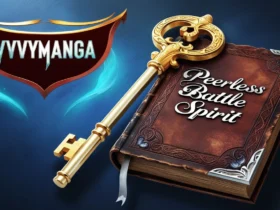


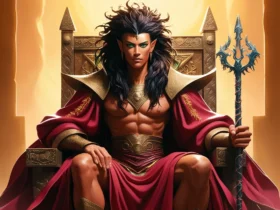

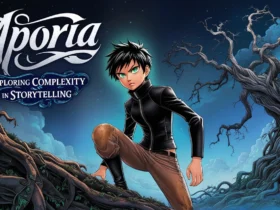



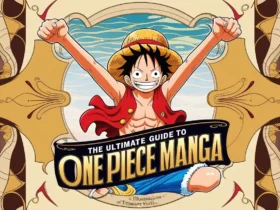



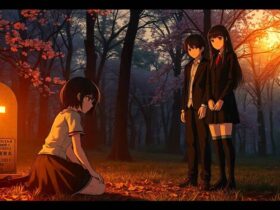
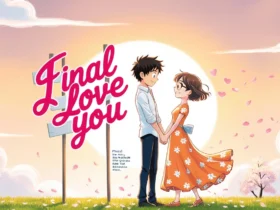

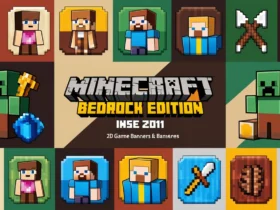

Leave a Reply